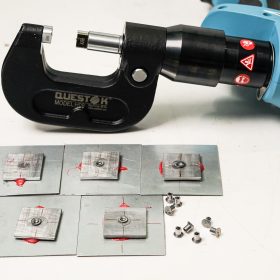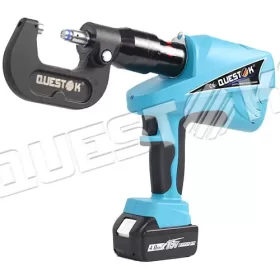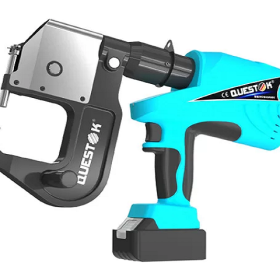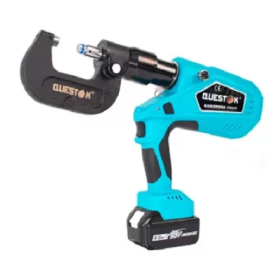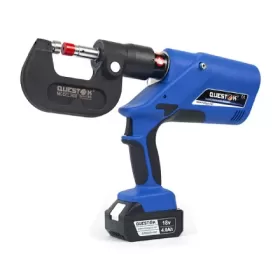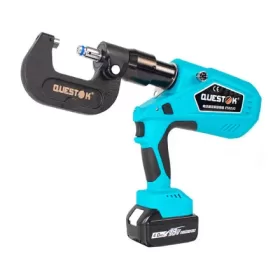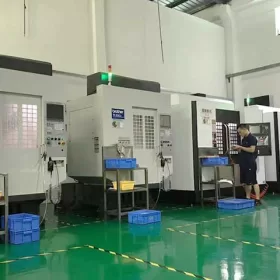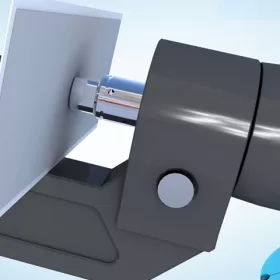Quality Assurance- Ensuring Excellence with Self-Piercing Rivet Tools
In the realm of manufacturing, quality assurance is paramount. It ensures the reliability, durability, and safety of products, mitigating risks and safeguarding both the manufacturer and consumers. When it comes to joining materials, self-piercing rivet tools offer a unique combination of strength, efficiency, and cost-effectiveness. However, maintaining the highest quality standards requires a comprehensive approach to quality assurance.
Defining Quality Assurance
Quality assurance encompasses a series of processes and practices designed to prevent defects and ensure that products meet or exceed specified requirements. It involves establishing clear standards, monitoring production, inspecting products, and taking corrective actions when necessary. By proactively addressing potential issues, manufacturers can minimize the risk of substandard products reaching the market.
Role of Quality Assurance in Self-Piercing Rivet Applications
Self-piercing rivet tools are used to join two or more sheets of metal without the need for pre-drilled holes. This eliminates the need for additional tooling, reduces assembly time, and enhances joint strength. However, proper quality assurance is crucial to ensure the integrity of these joints.
Inspection and Testing
Thorough inspection and testing are essential components of quality assurance. Rivets should be visually inspected for any defects, such as cracks or burrs. Non-destructive testing techniques, such as ultrasonic or X-ray inspection, can be used to evaluate the internal structure of the joints and detect any hidden imperfections.
Process Control
Maintaining strict process control is critical for consistent quality. This includes adhering to manufacturer’s guidelines for rivet selection, setting parameters, and operational procedures. Automated riveting systems can help ensure accurate and repeatable riveting processes, minimizing human error.
Material Verification
The quality of the materials used in the riveting process plays a significant role in the overall strength and durability of the joint. Suppliers should be carefully selected and their materials verified to meet the required specifications. The use of high-quality rivets and compatible materials ensures optimal performance.
Calibration and Maintenance
Regular calibration and maintenance of riveting equipment is essential to maintain accuracy and performance. Worn or misaligned tools can lead to defective rivets and compromised joints. Establishing a preventive maintenance schedule helps identify and address potential issues before they affect production.
Operator Training
Skilled and knowledgeable operators are key to successful riveting operations. Comprehensive training programs should be implemented to ensure that operators understand the principles of riveting, the proper use of equipment, and the importance of quality assurance. A well-trained workforce reduces the likelihood of errors and promotes consistent high-quality results.
Continuous Improvement
Quality assurance is an ongoing process that requires continuous improvement. Regular reviews of quality metrics and customer feedback should be conducted to identify areas for improvement. By embracing a culture of continuous improvement, manufacturers can consistently enhance the quality of their self-piercing rivet applications.
Conclusion
Quality assurance is essential for ensuring excellence in self-piercing rivet applications. By implementing comprehensive quality assurance practices, manufacturers can prevent defects, ensure product reliability, and maintain customer satisfaction. From rigorous inspection and testing to process control, material verification, and continuous improvement, a comprehensive approach to quality assurance safeguards the integrity of riveted joints and the reputation of the manufacturer. By adhering to the highest quality standards, manufacturers can deliver products that meet or exceed expectations, driving success in competitive markets.
- Company News
- Industry News
- Tag
- Tags
-
The Advantages of Questok Rivet Guns: Precision, Efficiency, and Durability
In industrial fastening applications, the choice of tools directly impacts productivity, safety, and long-term cost-effectiveness. Questok rivet guns have emerged as a standout solution for professionals across aerospace, automotive, and construction sectors. Combining advanced engineering with user-centric design, these tools deliver unmatched performance. Below are the key advantages that make Questok rivet guns a preferred choice:
-
Rivet Gun FAQ
Rivet Gun FAQ-SPR
-
Fast Assembly and Repair With Cordless Solid Rivet Gun
Questok cordless solid rivet gun stands out as a pivotal innovation, merging portability with power to facilitate efficient and effective fastening in a myriad of applications.
-
Redifine The Role of Self-piercing Riveting Gun Machine
Self-piercing riveting adopts high-speed mechanical fastening skill that joins thin sheet materials, typically steel and aluminum alloys.
-
The Latest Innovations in Clinching Tool Design
Explore the latest innovations in clinching tool design, redefining precision, efficiency, and versatility in material joining.
-
The Application and Maintenance of Self-Piercing Rivet Guns
Delve into the applications of self-piercing rivet guns in the automotive and aerospace industries and reveal the essential maintenance practices that ensure their accuracy and efficiency.
-
Rivetless Riveting Gun for Ventilation Duct Projects
The ventilation duct rivetless gun is a tool for riveting ventilation ducts without rivets.
-
Guide to Using Self-Piercing SPR Riveting Gun
In the automotive industry, self-piercing SPR (Self-Piercing Rivet) riveting guns are commonly used for joining metal components in vehicle bodies, including BMW vehicles.
-
Rivet Gun FAQ
Rivet Gun FAQ-SPR
-
Versatile Fastening- Applications of the Handheld Rivet Gun Across Industries
In the realm of fastening, the handheld rivet gun stands as a testament to ingenuity and versatility. Its ability to effortlessly join materials with sheer strength and permanence has revolutionized manufacturing and construction processes, leaving an enduring mark on diverse industries. Aerospace: Where precision and reliability are paramount, the rivet gun shines. In aircraft assembly, […]
-
Time-Saving Tools- Speeding Up Projects with Electric Blind Rivet Guns
In the whirlwind of project deadlines, every minute counts. But what if there was a tool that could dramatically reduce assembly time, giving you an edge in the race against the clock? Enter the electric blind rivet gun: your secret weapon for lightning-fast and effortless riveting. Electric blind rivet guns are the ultimate time-savers for […]
-
Streamlining Fastening- How an Electric Blind Rivet Gun Enhances Efficiency
Introduction In the realm of manufacturing and assembly, fastening plays a crucial role in securing components and ensuring structural integrity. Traditional manual rivet guns, while reliable, are often time-consuming and labor-intensive. The advent of electric blind rivet guns has revolutionized the fastening process, significantly enhancing efficiency and productivity. This article delves into the benefits of […]
-
The Role of Automation in Electric Rivetless Clinching
Electric rivetless clinching (ERC) is a lightweight joining process that eliminates the need for rivets or other fasteners. This can lead to significant cost savings and increased production efficiency. Automation plays a critical role in ERC, enabling high-speed and high-volume production. Automated Feed Systems Automated feed systems are used to accurately position the two workpieces […]
-
Why Choose a Universal Self-Piercing Riveting Gun for Your Projects?
In the realm of construction and fabrication, riveting guns stand as indispensable tools for creating secure and robust connections. Among the various types available, universal self-piercing riveting (SPR) guns have emerged as a game-changer due to their versatility and efficiency. This article will delve into the compelling reasons why choosing a universal self-piercing riveting gun […]
-
Why Choose Stainless Steel Hollow Rivets for Your Projects?
In the world of industrial manufacturing, choosing the right fasteners for your projects is crucial for ensuring longevity and reliability. Among the many options available, stainless steel hollow rivets stand out as a superior choice for a wide range of applications. This article delves into the compelling reasons why stainless steel hollow rivets are the […]
-
Top Trends in Electric Rivetless Clinching Guns
In the realm of fastening technology, electric rivetless clinching guns have emerged as a revolutionary solution for a wide range of industrial applications. These advanced tools offer several преимущества and capabilities, revolutionizing the way businesses approach their fastening needs. Adoption of Brushless Motors Brushless motors have gained significant traction in electric rivetless clinching guns due […]
